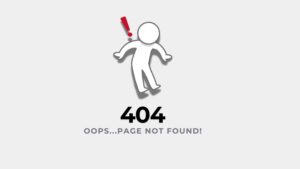Nowadays, most local entrepreneurs have one major problem: How do I make the phone ring?
This million dollar question keeps them up all night and would even lead to them being terrified that one day they’ll head to work and the phones are dead. Truth is, as unfortunate as it may sound; many local business owners are already experiencing this problem.
With map results shrinking, ad space increasing, and national brands owning organic results, local business owners are left feeling helpless.
Most of them that we interviewed stated that they have gone through a slew of agencies, ideas, and poor results. On the contrary, most advertisers are having to convert at over 10% on their search campaigns just to keep their local clients (with tough cost per acquisitions) happy and stuffed with leads.
Dark times indeed.
So what’s the solution? For bad agencies, not sure…but, going back to the main question: Call Only Ads!
The Mind of the Searcher: 3 Questions to Ask
Before hopping on the bandwagon of call only campaigns, let’s examine first what’s inside the mind of our searcher.
What are the issues that this person is trying to solve?
Is their issue immediate?
Would it make more sense for them to search from their mobile device?
Does talking to someone make them feel more comfortable to buy?
If the answer to all these questions is yes, then you definitely are a good fit for call only ads.
Preparing Internally for Your Call Only Ad Campaign
Okay, we have determined that AdWords is important and that our industry is in need of call only ads, however, is our actual business a good fit for it?
To prepare appropriately, we will need the following to be in place:
Call tracking to record the calls.
An experienced staff and a clear goal for the next steps. (i.e. consultation, proposal, in-person visit, etc.)
To test your readiness, have a friend call your business and place the call on speaker mode. What is the experience like? Did it take a long time to pick up? Was the staff friendly? Did they put you on hold? The sales funnel needs to be firm so that you don’t lose the lead.
Once you have the basics in place, you are definitely all set to start your call only campaign. We’ve discovered that a lack of preparation and training of the staff that answers the phone is mostly the reason for poor-performing call only campaigns and abandoned calls.
Building Your Call Only Ad Campaign
Setting up a successful campaign is more art than science. But, to make sure that the artist in you is succeeds; let’s not forget to set up clear process for success.
We expect that you already know how to set up a campaign so we will not go into that part. Here, we will dive into the thought process behind building a successful campaign.
(Note: For basic step-by-step instructions or help see the AdWords blog.)
Step 1: Understand the Market
Take time to conduct searches from your phone for your top keywords.
Analyze the ads showing up on your phone:
Do they answer the searcher’s intent?
Are they call only ads or are they text ads?
Are they running any promotions?
What’s their price point?
Are they local as well?
By asking yourself these questions, you will begin to plan the foundational keys to a successful call only campaign:
Craft ad copy that allows a searcher to feel assured enough to click the call button. What questions can we answer that they don’t even realize they have?
Are you worth their click? Let’s make sure of it!
Step 2: Select Your Keywords
In every campaign, there is plenty of room for data analysis. But given the theme of this post, let’s set aside analyzing search volume and CPC.
Instead, let’s analyze the intent behind our keywords. Let’s make sure that the searcher’s goal fits with ours: getting the “right” calls.
Ask: What keywords linked to my industry would make a searcher more click the call button?
Here are a few keywords to get the juices flowing:
keyword +near
+local keyword
keyword +quote
keyword +city
call only ad data
Tip: After going through internal search term reports from our MCC, we found out that advertising with creative copy on large competitors’ brand terms can be a successful barnacling tactic for call only campaigns. Simple reasoning, most national brands do a poor job owning their brand SERP with correctly localized call only ads.
Step 3: Craft Your Ad Copy
Your ad copy is your landing page when it comes to call only ads. If you want to be successful, in the words of @larrykim, you better be a Unicorn.
We need to be convincing to the searcher that our ad deserves their thumb. So, start by addressing these questions:
How much will it cost?
Are you trustworthy?
Is your business close to me?
Who will I be speaking with?
Step 4: Listen to your calls
AdWords is about your approach and feedback loop from the customer. Advertisers with the tightest customer feedback system always wins.
By installing a call tracking/recording program, you can now listen to the concerns of your customers. By noting down these information and applying them to your ad copy (REMEMBER! It’s your landing page for call only), your conversion rates will increase and thus starts your journey towards unicorn land.
Moreover, we can take this information and investigate through our search term reports. Do we have the correct ad copy for keywords that are receiving clicks? Do we have the answers that they need?
Let’s wrap it up.
As advertisers, we should start worrying less about the data and more about the framework.
Are phone calls very important in this industry?
What is the need of the searcher? Is it immediate?
What does the SERP landscape look like?
What are the searchers’ expectations when they call?
Why would they call us instead of someone else?
Does our ad copy answer any questions they might have or need to know before they feel comfortable to call?
By considering this set of questions, an average local search campaign can definitely turn into a high-powered, phones-ringing-off-the-hook call only campaign.
By simply answering these theoretical questions in our day-to-day AdWords management, you can see the success of a maid service campaign from the last 30 days.
So, as a recap: move out of the platform, analyze your environment, and be the best answer for your searchers’ intent.









